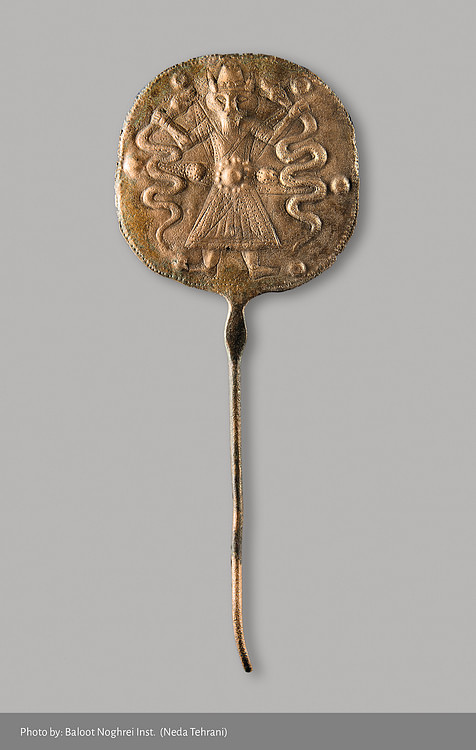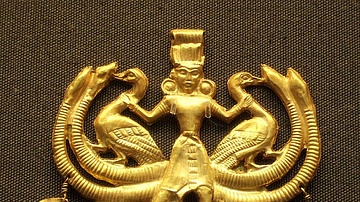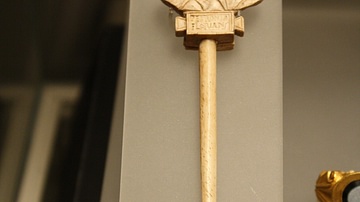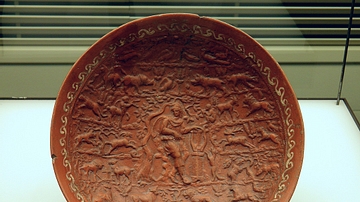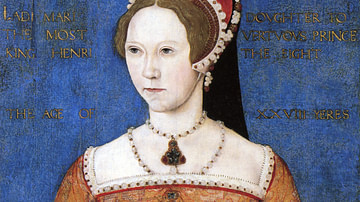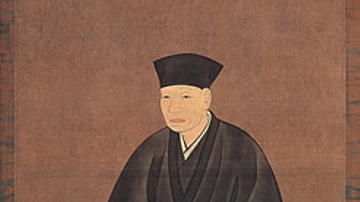Server Costs Fundraiser 2024
Illustration
Bronze Hairpin Depicting 'Master of Animals', found in Luristan (central Zagros), c. 950 to c. 650 BCE.
National Museum of Iran, Tehran, acc. no. 1459.
Photo by Neda Tehrani (Baloot Noghrei)
Long bronze hairpins crowned with a large disk are among the remarkable artefacts retrieved from Luristan, western Iran. Perhaps to serve a unisex function, or even made in two kinds for men and women, metal pins were used to fasten long curls, particularly of the nobility. The disks could bear decorations of geometric or representative content, such as the snake-clutching character above that may remind us of Hercules. However, a human figure, most likely a deity, sided by a pair of conquered beasts appears in the art of many ancient cultures from Egypt to the Near East and the Aegean. Known as the 'Master of Animals', the beast-fighting and monster-ruling male figure, sometimes with bovine features, such as horns and/or pointed ears, appears in the Mesopotamian art from the Ubaid period, with some earliest examples on stamp seals from the 5th-millennium BCE Tappeh Giyan not far from Luristan. The presence of this motif on the chlorite vessels of south-eastern Iran in the 3rd millennium BCE vouches for the vastness of Elamite influence connecting its two distanced capitals of Susa and Anshan.
Serpent monsters in Mesopotamian mythology were venomous children of Tiamat, closely tied with the notions of the underworld and death. Although all the demonic commanders of Tiamat were finally defeated by Marduk and became servants of him and other benevolent gods, keeping them permanently in check was regarded as a principal duty for a ruler, as symbolised in the Myth of Etana. In the first half of the 1st millennium BCE, an already declining Elam had to confront external invasions, most devastatingly from the Neo-Assyrian Empire, and internal disintegration of the land, with territories lost to the Medes, the Persians, and the local state of Anshan. Therefore, it would seem appropriate for art to reflect the idea of appealing for protection to kingly deities such as Marduk and Inshushinak, the tutelary god of Susa.
References
- François Desset, Meisam Shahsavari, and Massimo Vidale. "THE MARḪAŠEAN TWO-FACED 'GOD': NEW INSIGHTS INTO THE ICONOGRAPHIC AND RELIGIOUS LANDSCAPES OF THE HALIL RUD VALLEY CIVILIZATION AND THIRD MILLENNIUM BCE SOUTH- EASTERN IRAN." Journal of Sistan and Balouchistan Studies, no. 1 vol. 1 2021, pp. 49-85.
- Mehmet Ali Ataç. The Mythology of Kingship in Neo-Assyrian Art. Cambridge University Press, 2010
Cite This Work
APA Style
Iran, N. M. o. (2024, April 05). Bronze Hairpin Depicting 'Master of Animals' from Iron Age Zagros. World History Encyclopedia. Retrieved from https://www.worldhistory.org/image/18769/bronze-hairpin-depicting-master-of-animals-from-ir/
Chicago Style
Iran, National Museum of. "Bronze Hairpin Depicting 'Master of Animals' from Iron Age Zagros." World History Encyclopedia. Last modified April 05, 2024. https://www.worldhistory.org/image/18769/bronze-hairpin-depicting-master-of-animals-from-ir/.
MLA Style
Iran, National Museum of. "Bronze Hairpin Depicting 'Master of Animals' from Iron Age Zagros." World History Encyclopedia. World History Encyclopedia, 05 Apr 2024. Web. 26 Jul 2024.
